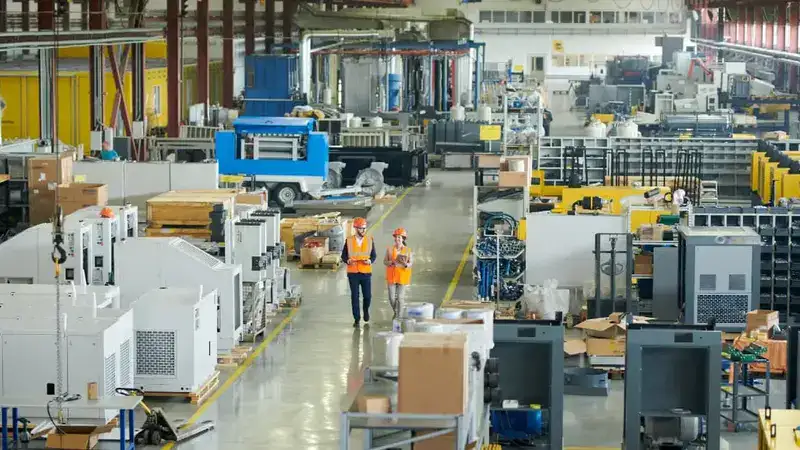Table of Contents
- The Importance of Talent Management in Manufacturing
- Identifying Skill Gaps
- Innovative Recruitment Strategies
- Employee Development Programs
- Employee Retention Strategies
- Leveraging Technology for Talent Management
- Creating a Positive Workplace Culture
The Importance of Talent Management in Manufacturing
The manufacturing industry faces unique challenges in managing and nurturing talent in today’s competitive landscape. Effective manufacturing assessment tools can be crucial in identifying and developing the right talent, paving the way for long-term success and workforce stability.
Organizations that invest in their employees’ growth and satisfaction often see better retention rates and improved morale. In a sector where precision and efficiency are critical, having a team of competent and engaged individuals can make all the difference.
Moreover, talent management is not just about hiring the right people; it encompasses the entire employee lifecycle—recruitment, development, retention, and succession planning. Companies can build a resilient and adaptive workforce prepared to meet future challenges and capitalize on growth opportunities by focusing on these areas.
Identifying Skill Gaps
Understanding the existing skill gaps within your organization is the first step toward effective talent management. Conducting regular skills assessments and employee surveys can help identify areas for improvement. Knowing where your team needs development allows for targeted training programs, which can bridge these gaps and enhance overall productivity. Furthermore, identifying skill gaps early can prevent potential issues such as production delays, quality control failures, and decreased employee morale.
One effective method for identifying skill gaps is using performance reviews and feedback from multiple sources, such as supervisors, peers, and customers. This holistic approach provides a comprehensive view of an employee’s capabilities and areas that require development. Additionally, leveraging analytics tools can help identify trends and patterns in skill deficiencies, enabling managers to take proactive measures.
Innovative Recruitment Strategies
Recruiting top talent requires creative and innovative strategies. Leveraging social media, offering attractive benefits, and collaborating with educational institutions are among the methods that can expand your talent pool beyond traditional boundaries. Additionally, attending industry conferences and job fairs can provide opportunities for face-to-face interactions with potential candidates. In today’s digital age, utilizing online recruitment platforms and professional networks like LinkedIn can be highly effective.
Innovative recruitment doesn’t stop at attracting candidates; it also involves creating a seamless and engaging candidate experience. From the initial application process to onboarding, ensuring that each touchpoint reflects the company’s values and culture can significantly impact a candidate’s decision to join your organization. Moreover, implementing employee referral programs can leverage your existing workforce’s networks, often leading to high-quality hires.
Employee Development Programs
Investing in employee training and development is crucial for retaining top talent and enhancing their skills. Programs like mentorship, online courses, and workshops can significantly contribute to employee growth. According to a Forbes report, companies prioritizing employee development tend to have lower turnover rates and higher employee satisfaction. Organizations can stimulate creativity, enhance job performance, and prepare employees for future leadership roles by offering continuous learning opportunities.
Creating a structured development program involves several key elements, including setting clear objectives, offering diverse learning formats, and regularly evaluating the program’s effectiveness. Additionally, it’s important to tailor development plans to individual employees, considering their career aspirations, current skills, and areas for improvement. This personalized approach can enhance engagement and ensure the training is relevant and impactful.
Employee Retention Strategies
Keeping your employees engaged and satisfied is vital for long-term success. Some effective retention strategies are offering competitive salaries, recognizing achievements, and providing career advancement opportunities. Establishing a welcoming, inclusive workplace where staff members feel appreciated can significantly affect their loyalty to the company. Strong staff retention tactics must be implemented since high employee turnover can be expensive and disruptive.
In addition to monetary rewards, non-financial incentives such as flexible working hours, remote work options, and wellness programs can significantly enhance employee satisfaction. Regularly seeking feedback through surveys and one-on-one meetings can also provide insights into employees’ needs and concerns, allowing management to address issues promptly. Creating a culture of acknowledgment in which workers are frequently thanked for their accomplishments will help retention efforts even more.
Leveraging Technology for Talent Management
Technology plays a pivotal role in modern talent management. Utilizing tools like HR software, data analytics, and AI can streamline processes, making it easier to manage employee data, track performance, and identify potential leaders. A study by SHRM emphasizes the impact of advanced technology in enhancing talent acquisition and management processes. These tools can automate routine tasks, freeing HR professionals to focus on strategic initiatives.
For example, AI-powered recruitment tools can analyze resumes and match candidates to job openings based on their skills and experiences, significantly reducing the hiring time. Managers can make data-driven decisions by using real-time analytics and feedback from performance management tools. Moreover, employee engagement platforms can foster communication and collaboration, creating a more cohesive and motivated workforce.
Creating a Positive Workplace Culture
Fostering a positive workplace culture is essential for attracting and retaining talent. Encouraging open communication, promoting work-life balance, and building a diverse and inclusive environment can drastically improve employee satisfaction. Employees who feel their workplace values their contributions and well-being are likelier to remain loyal and motivated. A positive culture enhances employee morale and boosts overall company performance.
Creating a positive culture requires intentional efforts, such as regularly celebrating team achievements, providing opportunities for social interactions, and ensuring that organizational values are consistently communicated and upheld. Leadership plays a critical part in building the culture, so leaders must model the behaviors and attitudes they wish to see in their teams. Additionally, fostering a culture of feedback and continuous improvement can empower employees to contribute their ideas and feel invested in the company’s success.



